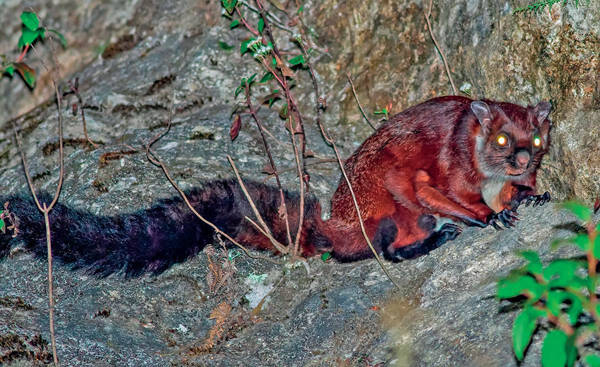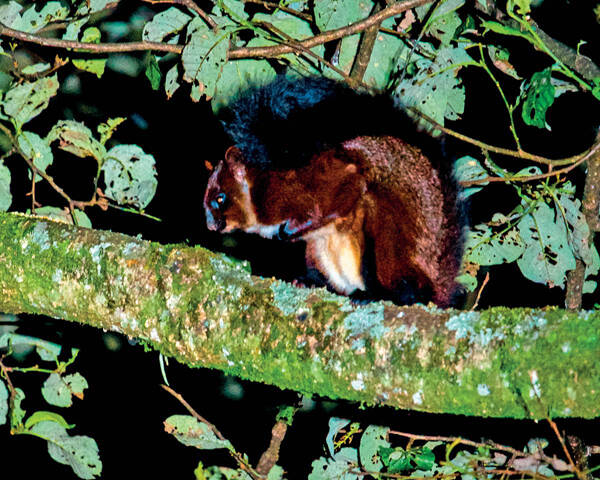Petaurista albiventer
IUCN
LCBasic Information
Scientific classification
- name:Petaurista albiventer
- Scientific Name:Petaurista albiventer,Brown-footed flying squirrel, red-backed flying squirrel, flying fox, flying mouse
- Outline:Rodents
- Family:Rodentia Sciuridae F.Squirrel
Vital signs
- length:
- Weight:
- lifetime:
Feature
Its tail is very thin and longer than its body. It has a cat-like body but a fox-like head and sharp claws and fangs.
Distribution and Habitat
In China, it is distributed in Tibet, Yunnan, Sichuan, Hainan, Taiwan, etc. Abroad, it is distributed in Myanmar, etc.
It lives in subtropical mountain evergreen broad-leaved forests or mixed coniferous and broad-leaved forests.
Appearance
The eye sockets and nose are black, the cheeks are grayish black, and the head, neck and back of the trunk are mainly chestnut. Most individuals have scattered white hair tips starting from the shoulders, and more on the waist and hips. The chest and abdomen are mainly brown, and the toes of the limbs are black. The tail is cylindrical, with well-developed tail hair, and the rear end is basically black.
Details
The chestnut-backed flying squirrel is a species of Chinese flying squirrel. The chestnut-backed flying squirrel, also known as the red-backed flying squirrel or the brown-footed flying squirrel, is a rare wild animal with important economic and scientific research value announced by the state in 2000. It is a rare wild animal under the second-level protection of the state.

The eyes and pupils of the chestnut-backed flying squirrel are very large, which can sense weak light and is suitable for night life. There is a thin membrane between the front and back legs on both sides of the body, and fine hairs grow on both sides of the membrane. They use this unique membrane to glide down from trees or rock walls, gliding 20 to 50 meters; when gliding, it is like a parachute, able to glide with the rising air currents, and when gliding, it will make a "squeak, squeak, squeak" scream, the sound is long or short. The farthest can glide hundreds of meters away.
This animal is nocturnal, highly alert, and has a small population. It is active at night and at dawn and dusk. During the day, it often curls up in a tree hole or a cave, sleeping with its head resting on its tail. At night, it comes out to move and forage. They usually move alone and feed on fruits, seeds, buds, tender leaves, and insects of trees. In winter, it lives in tree holes or caves, no longer foraging, and hibernates until the climate warms up before resuming activities. It mainly feeds on small animals, pine and cypress leaves and plant fruits, and likes to eat pine and cypress seeds. It reproduces 1 to 2 times a year, with 2 to 4 pups per litter. Newborn pups are hairless but have membranes.

The chestnut-backed giant flying squirrel is a rare wild animal with important economic and scientific research value announced by the state. There are 13 genera and 34 species in the world, and 7 genera and 16 species in China. The feces of flying squirrels is a precious traditional Chinese medicine called "Wulingzhi". It can promote blood circulation, remove blood stasis and relieve pain. It is a good medicine for treating chest and abdominal pain and gynecological diseases.








